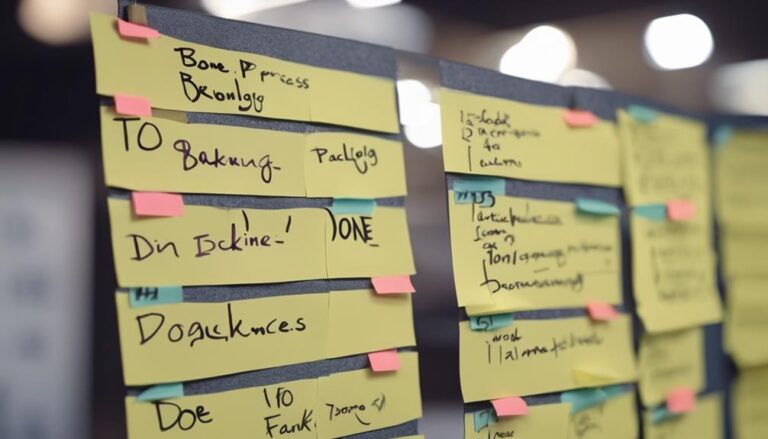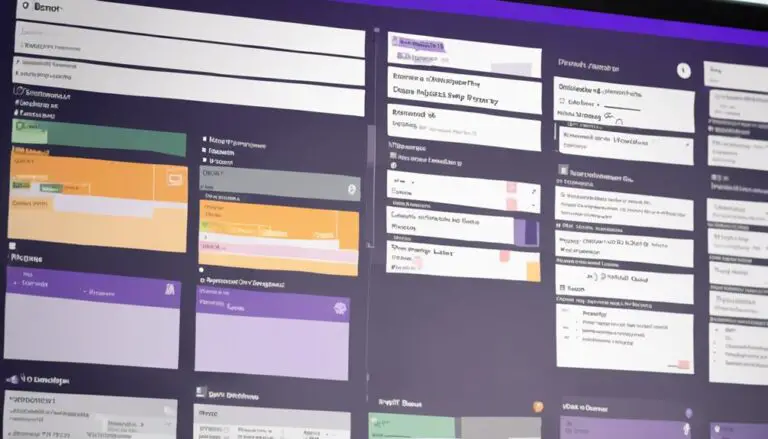You've implemented Kanban successfully in your organization, but now you're wondering how to take it to the next level. Scaling Kanban can be a daunting task, but with the right strategies and tips, you can navigate this process smoothly and effectively. One helpful tip for scaling Kanban is to prioritize regular communication and collaboration among teams to ensure everyone is aligned and working towards the same goals. Additionally, implementing a system for tracking and analyzing kanban story points can provide valuable insights into the efficiency and productivity of your Kanban process. By focusing on continuous improvement and making data-driven decisions, you can successfully scale Kanban in your organization.
From optimizing your Kanban boards to implementing cadences that align with your management infrastructure, there are key insights to help you achieve sustainable scalability. Stay tuned to discover actionable advice that will propel your Kanban implementation to new heights.
Key Takeaways
- Prioritize evolving processes seamlessly to scale Kanban effectively.
- Implement feedback loops for continuous improvement in Kanban practices.
- Design interconnected Kanban boards for better visualization and workflow management.
- Embrace small batches and set WIP limits to optimize Kanban scalability.
Scaling Kanban Principles
To successfully scale Kanban principles within your organization, prioritize evolving processes seamlessly while maintaining existing workflows. When scaling Kanban, implementing feedback loops is crucial to ensure continuous improvement and adaptability. Start by designing your Kanban system with interconnected Kanban boards to visualize progress effectively.
Embrace the concept of small batches and set work in progress (WIP) limits to enhance flow efficiency. Leveraging Kanban software can streamline your processes and facilitate collaboration across teams.
As you scale Kanban, consider utilizing the Kanban Maturity Model to assess your progress and identify areas for enhancement. By connecting practices and aligning efforts across the organization, you can optimize services and achieve a higher level of efficiency in scaling Kanban.
Stay focused on improving flow and managing work effectively to drive success as you navigate the journey of scaling Kanban principles within your organization.
Kanban System Design Strategies
How can Kanban system design strategies be optimized for visualizing progress effectively within your organization? When considering the design of your Kanban system, it's crucial to focus on creating interconnected Kanban boards that offer clear visibility into the progress of your projects. To ensure success, follow these strategies:
- Utilize the STATIK Approach: Incorporate the Systems Thinking Approach to Implementing Kanban (STATIK) to design Kanban systems tailored to each service within your organization.
- Understand Classes of Service: Recognize the different classes of service your team offers to prioritize work items effectively.
- Enhance Value Stream: Map out your value stream to identify bottlenecks and areas for improvement in your workflow.
- Implement Feedback Loops: Establish feedback loops and track flow metrics to make data-driven decisions and continuously improve your Kanban system design.
Implementing Kanban Cadences
Consider establishing regular Kanban cadences to drive information flow and optimize service delivery processes in your organization.
By implementing these cadences, you can categorize work effectively, synchronize activities, and align the team's efforts towards common goals. This structured approach enables better management of dependencies, addressing bottlenecks, and improving overall workflow efficiency.
Kanban cadences create a rhythm for continuous improvement, integrating feedback, and adapting to market demands efficiently. Through these regular meetings, you can lead your team to focus on flow, enhancing collaboration, and fostering a culture of accountability and transparency.
Embracing Kanban cadences not only helps in tracking project progress and reducing lead time but also ensures that shared services are utilized effectively. The team works together seamlessly, driving scaling and continuous improvement within your organization's service delivery processes.
Sustainable Kanban Scaling Techniques
Wondering how sustainable Kanban scaling techniques can elevate your workflow alignment and operational efficiency? When looking to scale Kanban effectively, consider the following tips:
- Track Project Value: Ensure your team knows how to identify and track the value of each project within the Kanban system.
- Make Policies Explicit: Create alignment by making sure that all process policies are clearly defined and understood by everyone involved.
- Use Kanban to Create Balance: Implement Kanban practices that help create a balance between demand and capacity, reducing bottlenecks and overburdening.
- Consider the Cost of Delay: When approaching the implementation of Kanban, always consider the cost of delay for different tasks and prioritize accordingly.
Kanban Board Optimization Tips
To optimize your Kanban board effectively, set clear work-in-progress (WIP) limits for each stage to prevent bottlenecks. By defining these limits, you ensure that work flows smoothly through different workflow stages, maintaining a steady pace of progress.
Visualizing your workflow stages on the Kanban board enhances visibility and allows your team to track tasks efficiently. Incorporating feedback from team members to regularly review and refine the board layout is crucial for improving overall efficiency.
Consider using color-coded cards or labels to categorize tasks and prioritize them effectively. Digital tools can further streamline collaboration and provide real-time updates, increasing visibility across teams and promoting a more efficient workflow.
Frequently Asked Questions
How Do You Scale Kanban?
To scale Kanban effectively, utilize team collaboration, continuous improvement, workflow visualization, stakeholder engagement, process optimization, Lean principles, work in progress limits, cycle time tracking, capacity planning, and cross-functional teams. These elements foster sustainable growth and efficient operations.
How Do I Make My Kanban Successful?
To make your Kanban successful, prioritize team collaboration and visualizing workflows. Embrace continuous improvement with daily stand-ups and cycle time tracking. Set WIP limits, follow lean principles, involve cross-functional teams, and stay agile. You got this!
How Do You Run Kanban Effectively?
Run Kanban effectively by prioritizing tasks collaboratively, visualizing workflows, tracking cycle times, and enforcing WIP limits. Foster continuous improvement through daily standups, cross-functional teams, and bottleneck identification. Embrace lean principles to optimize flow and enhance team collaboration.
How Do You Implement Kanban Successfully?
To implement Kanban successfully, focus on team collaboration, visual management, and continuous improvement. Optimize workflows, limit work in progress, and apply lean principles. Reduce cycle times, hold daily stand-ups, track performance metrics, and keep a customer focus.
Conclusion
As you navigate the vast ocean of scaling Kanban, remember that success lies in your ability to steer your ship with intention and mindfulness.
Just as a skilled captain adjusts sails to catch the wind, you must adapt and evolve your Kanban practices to reach new horizons.
Embrace the journey, harness the power of collaboration, and set sail towards a future where efficiency and continuous improvement reign supreme.
Fair winds and following seas on your Kanban scaling adventure!





